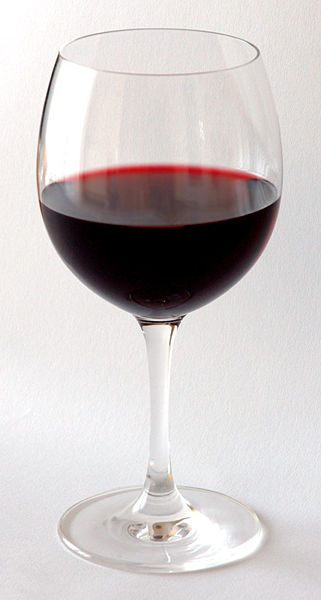Beer and Beauty
Interview with
Kat - Now, the beer goggles, or stella-vision, is a well known phenomenon where a few alcoholic drinks makes other people seem much more attractive, sometimes even leading people to do things they regret. Psychologists at Bristol University have been looking into this effect, and it seems that there's more to it than it seems at first. We've got Marcus Munafo with us to explain a bit more... So Marcus, do beer goggles really exist and what causes them?
 Marcus - Well, they do seem to exist and that's probably not a great surprise to most people. As you say many of us have been in that situation where we've has a drink and found ourselves finding other people attractive where, perhaps before the drink we didn't. This started out really as a bit of fun as a student project. We were surprised that no one had tried to do this in the more controlled environment of a lab. Although it was a popularly understood or believed phenomenon no one had tried to look at this under controlled conditions. We randomly gave people either a drink containing alcohol or a placebo drink that smelled the same but didn't contain alcohol and we found that after a relatively small amount (equivalent to a pint and a half of beer or a large glass of wine) people rated other faces as about 10% more attractive. These were the faces of male and female participants who were presented on a computer screen. People had to rate them on a seven point scale for how attractive they found them.
Marcus - Well, they do seem to exist and that's probably not a great surprise to most people. As you say many of us have been in that situation where we've has a drink and found ourselves finding other people attractive where, perhaps before the drink we didn't. This started out really as a bit of fun as a student project. We were surprised that no one had tried to do this in the more controlled environment of a lab. Although it was a popularly understood or believed phenomenon no one had tried to look at this under controlled conditions. We randomly gave people either a drink containing alcohol or a placebo drink that smelled the same but didn't contain alcohol and we found that after a relatively small amount (equivalent to a pint and a half of beer or a large glass of wine) people rated other faces as about 10% more attractive. These were the faces of male and female participants who were presented on a computer screen. People had to rate them on a seven point scale for how attractive they found them.
Kat - And it's definitely the alcohol, is there a placebo effect here at all?
Marcus - Well, we didn't compare the placebo drink with nothing so there may have been a placebo effect which we didn't detect. Certainly, when we compared the placebo condition to the alcohol condition there wasn't this ten per cent difference. What was interesting was that this didn't seem to be restricted to opposite sex faces. So we purposefully recruited people who described themselves as heterosexual and even same sex faces were rated as equally more attractive as opposite sex faces.
Kat - So you just think everything look great!
Marcus - Well, pretty much. At least that's what the data looked like. What we want to follow this up with is to see to what extent the effect is specific to faces. People weren't, because we gave a small amount of alcohol, people weren't saying that they were happier. They weren't reporting any changes in their mood but they were rating faces as more attractive. There is a question of whether or not we would rate anything as more attractive.
Kat - Like art or something like that?
Marcus - Like art or landscapes. Things that you could reasonably describe as attractive might show the same effect. So we're running a follow-up study to look at this now. The interesting thing is this seems to be potentially - we need more studies to find out what's going on - it seems to be a general effect of alcohol on potentially processing faces but potentially processing anything as attractive. But there was one study which mentioned this in a more naturalistic environment where they went into a bar. They didn't control for what people had been drinking. They didn't randomly give people one drink or another so it was a less controlled experiment but it was conducted in a real world environment, if you like. They just asked people how much they'd been drinking and they got them to do something similar to what we did. In that situation then the effect was specific to opposite sex faces. What we think might be happening is that there's one effect of alcohol which is that it modifies how we process faces, attractiveness and so on. When that occurs in a particular social setting, where there are social cues to do with mate-seeking behaviour and social interaction and so on then that effect becomes targeted among same-sex faces.
Kat - If you're at a typical party it's not just booze that's there. There may be cigarettes if you're at a very exciting party and there may be things like drugs. Do these have an effect?
Marcus - This is where it becomes a little bit more interesting. Finding the effect for alcohol is straightforward enough. Alcohol is a drug in much of the western world and it is largely used in social situations. The exact nature of those social situations differs across different countries. But you're right there are plenty of other drugs that we use including illegal ones very commonly. Caffeine's one, nicotine's another one and there are not legal in this country at least which are also used fairly extensively. We looked at nicotine. We did basically exactly the same study which was not an easy study to do because it's illegal to smoke indoors now.
Kat - Bad luck!
Marcus - There is an exemption in the legislation for research but for this study we had to do it in the back of a pub which is a more realistic environment so we were sat there with a laptop. It's quite clever - cigarettes either do or don't contain nicotine. You smoke a cigarette and you don't know whether it contains nicotine. Essentially you have a placebo condition and a nicotine condition. What we found was exactly the same effect. The nicotine - what we found that was after one cigarette there was a marked increase in the rate of attractiveness of faces when the cigarette contained nicotine compared to when it didn't.
Kat - That's really intriguing. Do you know why this might be? Do you think certain pathways in the brain are similarly being activated?
Marcus - We know that drugs of use have the capacity to stimulate the reward system and the dopamine pathway in a part of the brain called the nuclear accumbens and that might be part of the reason. Nicotine's an interesting case in point though because we know quite a lot about hwy nicotine's addictive and one of the reason's it's addictive - nicotine's not the drug that gives you a powerful psychoactive effect in the same way that alcohol does in cocaine or heroin. Once you've had your first 2 or 3 cigarettes you kind of tolerate the strong response you get to those. After that the effect is relatively mild. What nicotine seems to do, and there are animal studies that show this in different experiments, is that they make everything that happens around you slightly more reinforcing. In technological language it non-contingently potentiates the reward value of other things that are happening at the same time.
Kat - And another thing you associate alcohol with are not necessarily being attracted to someone but beating them up. If you're being more attracted to people why does alcohol fuel violence?
Marcus - There are lots of social cues that are present in faces. It's not necessarily the case that alcohol is going to be having uniform effect across all of those different facial cues. One of the things that we get from faces are judgements of attractiveness - in other words we think they might be a potential mate and we might direct our attention towards one sort of person over another, for example. We also get information over what kind of emotion that person is expressing: whether they are looking at us, whether they are a potential threat. There are lots of different cognitive mechanisms and information which is expressed in faces which we can interpret. Alcohol may modify the interpretation of those different pieces of information in slightly different ways. We have a programme of study that's looking at this: looking at for example, judgements of eye gaze and whether or not people are perceived to be looking at us after you've had a drink compared to when you haven't had a drink.
Kat - Kind of, ' Are you looking at me?'
Marcus - Exactly that and people certainly do start to see the world in a different way after they've taken drugs. This is true for nicotine and alcohol which are the main ones we investigate and there are quite complex and quite subtle effects that we can reproduce in the lab but which in the real world probably interact with all kinds of social cues and the more general dis-inhibiting effect of alcohol as well.
- Previous Dancing in your Genes
- Next Post Traumatic Stress Disorder










Comments
Add a comment